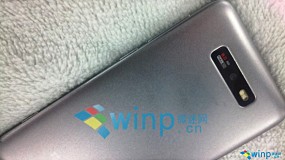Latest Apple iPhone 5 glitch could be a more serious problem
The Apple iPhone 5 has had its share of problems from dings out of the box, tostatic lines on the QWERTY keyboard, and to purple tinted pictures. The latest glitch could be more serious. Some game developers are finding that the latest version of Apple's iconic smartphone is having problems with rapid diagonal swiping. Will RDS join Antennagate and the 'left handed death grip' in the annals of Apple iPhone history? What makes this as serious as those other problems is that the attempt to swipe in a diagonal direction rapidly leads to the screen's inability to detect any touch input, ineffect freezing the screen.
Will this new glitch be fixed by an iOS update?
The glitch, which also appears on the 5th-gen Apple iPod touch, does not appear on the Apple iPhone 4S. Any detective or scientist (or House MD fan) would know that the way to find out where the problem lies is to look at what is different with the screen between the Apple iPhone 4S and Apple iPhone 5. Besides size, the latter model uses the in-cell technology which removes a layer of glass to make the display thinner. This combination of the digitizer and touch panel is the first time the Apple iPhone and Apple iPod touch have shared the exact same screen which points the finger at the new technology as being the culprit. As serious as this problem is, the freezing of the screen and the skipping will not hurt most users of the phone and will be more of a pain to game players who do diagonal swiping in a rapid-fire fashion. One game where that movement is used is Fruit Ninja.
At the beginning of this month, Apple sent out iOS 6.0.1 to kill some of the bugs, like the QWERTY static lines, that had afflicted users. If this is a software related issue, it could be resolved with the next iOS update. If it is a hardware problem, no amount of rubber bumpers is going to fix it.
source: TheNextWeb via CNET
Will this new glitch be fixed by an iOS update?
The glitch, which also appears on the 5th-gen Apple iPod touch, does not appear on the Apple iPhone 4S. Any detective or scientist (or House MD fan) would know that the way to find out where the problem lies is to look at what is different with the screen between the Apple iPhone 4S and Apple iPhone 5. Besides size, the latter model uses the in-cell technology which removes a layer of glass to make the display thinner. This combination of the digitizer and touch panel is the first time the Apple iPhone and Apple iPod touch have shared the exact same screen which points the finger at the new technology as being the culprit. As serious as this problem is, the freezing of the screen and the skipping will not hurt most users of the phone and will be more of a pain to game players who do diagonal swiping in a rapid-fire fashion. One game where that movement is used is Fruit Ninja.
At the beginning of this month, Apple sent out iOS 6.0.1 to kill some of the bugs, like the QWERTY static lines, that had afflicted users. If this is a software related issue, it could be resolved with the next iOS update. If it is a hardware problem, no amount of rubber bumpers is going to fix it.
source: TheNextWeb via CNET






























